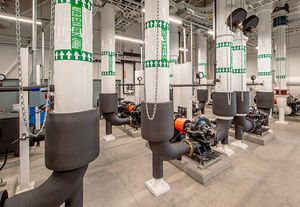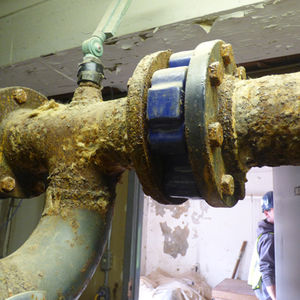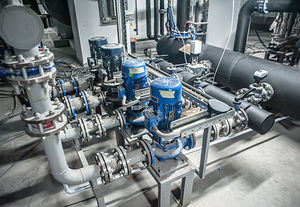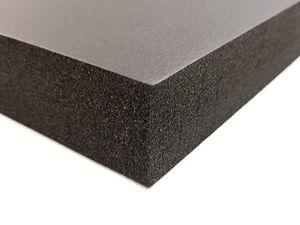 When insulating chilled water systems selecting the right insulation product can impact energy efficiency, cost, and long-term performance. There are several types of insulation, each made of a different material and capable of insulating to a different temperature range. Some material types are better suited toward one purpose than another, so insulation materials are commonly rated by their performance in thermal conductivity, water vapor resistance, thickness, and density. Installers, building owners, contractors and engineers that choose closed-cell elastomeric insulation understand that it is the preferred choice over open-cell fiberglass insulation. Our elastomeric insulation products not only save energy by minimizing heat gain or loss they also do the following:
When insulating chilled water systems selecting the right insulation product can impact energy efficiency, cost, and long-term performance. There are several types of insulation, each made of a different material and capable of insulating to a different temperature range. Some material types are better suited toward one purpose than another, so insulation materials are commonly rated by their performance in thermal conductivity, water vapor resistance, thickness, and density. Installers, building owners, contractors and engineers that choose closed-cell elastomeric insulation understand that it is the preferred choice over open-cell fiberglass insulation. Our elastomeric insulation products not only save energy by minimizing heat gain or loss they also do the following:
 Provide condensation control.
Provide condensation control.- Prevent moisture-related issues like corrosion under insulation (CUI).
- Provide freeze protection.
- Attenuate noise by reducing sound transmission.
- Inhibit the growth of mold and mildew with Microban® antimicrobial protection.
- Contribute to better indoor air quality.
- Minimize environmental impacts.
- Help building owners achieve green building standards and certifications.
- Contribute to sustainability efforts through emissions reduction, energy efficiency.
- Reduce installation efforts, especially on retrofit applications.
- Maximize ROI to achieve cost-control goals.
Why Closed-Cell Foam Elastomeric Insulation Offers Superior Protection
 Two fundamental choices exist in the market of thermal insulation: closed-cell and open-cell insulation. Non-conductive closed-cell insulation offers excellent thermal resistance because it consists of tiny, sealed cells that trap air, creating an efficient barrier against heat transfer. The fact that closed-cell structures are inherently durable and virtually impermeable to water means better lifetime efficiency. Closed-cell elastomeric foam, specifically AP ArmaFlex, has a very low permeability rating of 0.05 perm-inch and resists condensation which causes corrosion. It is also much less vulnerable to punctures and tears that can render other forms of insulation, specifically open-cell materials, ineffective.
Two fundamental choices exist in the market of thermal insulation: closed-cell and open-cell insulation. Non-conductive closed-cell insulation offers excellent thermal resistance because it consists of tiny, sealed cells that trap air, creating an efficient barrier against heat transfer. The fact that closed-cell structures are inherently durable and virtually impermeable to water means better lifetime efficiency. Closed-cell elastomeric foam, specifically AP ArmaFlex, has a very low permeability rating of 0.05 perm-inch and resists condensation which causes corrosion. It is also much less vulnerable to punctures and tears that can render other forms of insulation, specifically open-cell materials, ineffective.
 Open-cell insulation features interconnected cells making it generally more receptive to moisture ingress. Plus, the open cells are more prone to condensation and moisture intrusion issues which lead to a variety of problems like system maintenance, loss of thermal conductivity, poor performance, corrosion under insulation and even system failure. When it comes to insulating chilled water systems, the choice is clear – closed-cell elastomeric insulation outperforms open-cell fiberglass insulation every time.
Open-cell insulation features interconnected cells making it generally more receptive to moisture ingress. Plus, the open cells are more prone to condensation and moisture intrusion issues which lead to a variety of problems like system maintenance, loss of thermal conductivity, poor performance, corrosion under insulation and even system failure. When it comes to insulating chilled water systems, the choice is clear – closed-cell elastomeric insulation outperforms open-cell fiberglass insulation every time.
